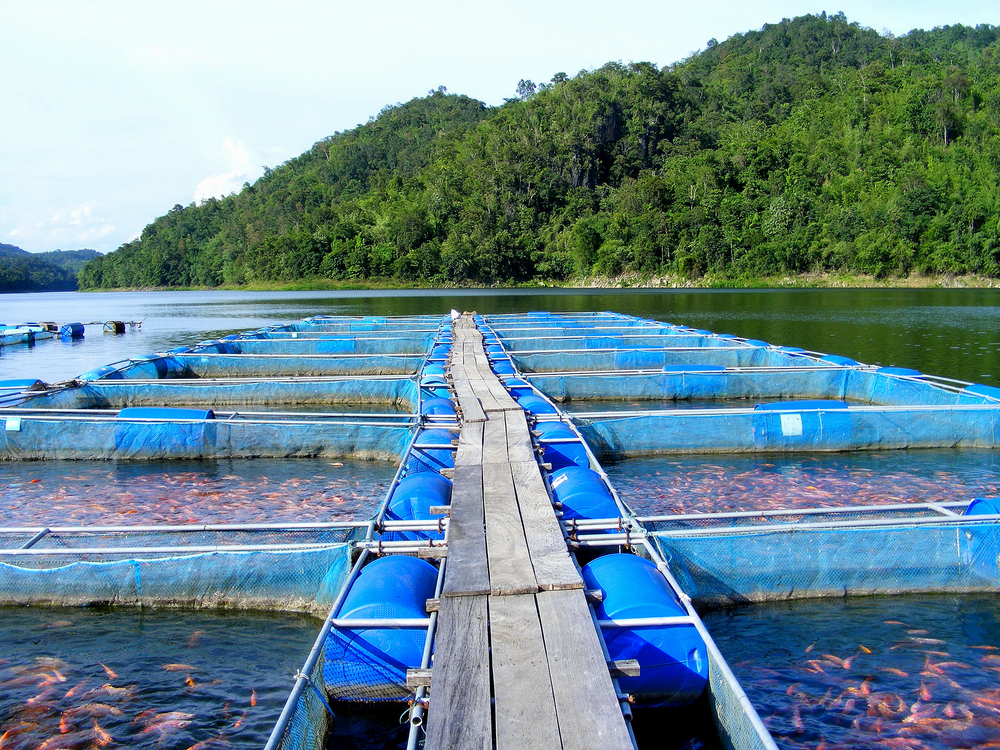The environmental impact of fish breeding has been significantly reduced across the globe over the last two decades. This is revealed in a survey study on aquaculture published by Simon Bush and international colleagues in Nature.
Nature published a survey article on aquaculture twenty years ago, which showed that the breeding of salmon, shrimp, tilapia, mussels and catfish had an adverse effect on the environment. At that time, the aquaculture sector still used much other fish (as fishmeal) to feed the fish, while excessive use of nutrients and medication polluted the water.
Waste streams
However, the situation has improved considerably over the past 20 years, says Bush, professor of Environmental Policy at WUR. While fish production tripled, the amount of fishmeal and fish oil in the sector dropped. The aquaculture sector has become much more efficient in its use of feed, primarily uses waste streams from the food industry, and has developed plant-based fish feed. Two decades ago, the aquaculture sector was independent of the other food systems but has since become much more integrated, according to the study in Nature, which was published on 25 March.
Over the last 20 years, the focus of the EU and the US was on the environment and restrictions, while unimpeded growth took place in Asia. This should be better balanced
Simon Bush, professor of Environmental Policy
Global aquaculture now produces 112 million tonnes of fish. This includes breeding tanks in the sea (for salmon, for example) and on the coast (for mussels and shrimp), but also, to an increasing degree, the freshwater cultivation of catfish and tilapia. The cultivation of aquatic plants such as seaweed, some 32 million tonnes, is also considered aquaculture. Some 92 per cent of cultivated fish is supplied by Asia, of which more than half by China. Most of this fish is traded locally and does not make it to the global market..
Certification
Although most Asian breeders are not affiliated to any of the western or NGO sustainability quality labels, the environmental impact is lessening there also, the researchers state. This is due to legislation and guidelines, but also because of the increased price of fishmeal. Nonetheless, there is still much room to improve the sustainability of the fish breeding sector there, the researchers state. In China, one-third of the catch in the fisheries sector is still used as feed in the aquaculture sector.
Emerging fish breeding countries are India, Bangladesh, Thailand and Vietnam, but aquaculture is also on the rise in Africa and Latin America. According to the researchers, governments should carefully consider where to allow breeders to settle. Fish breeding can also service ecosystems, for example because carp maintain the required water quality and biodiversity in water reservoirs and lakes.
The Netherlands
Bush feels that the Netherlands should also dedicate specific locations on the coast and at sea to aquaculture. ‘Over the last 20 years, the focus of the EU and the US was on the environment and restrictions, while unimpeded growth took place in Asia. This should be better balanced, and countries such as the Netherlands should have more aquaculture, especially keeping in mind sustainable, circular food systems.’

 Tilapia-farm in Thailand. Photo: Shutterstock
Tilapia-farm in Thailand. Photo: Shutterstock